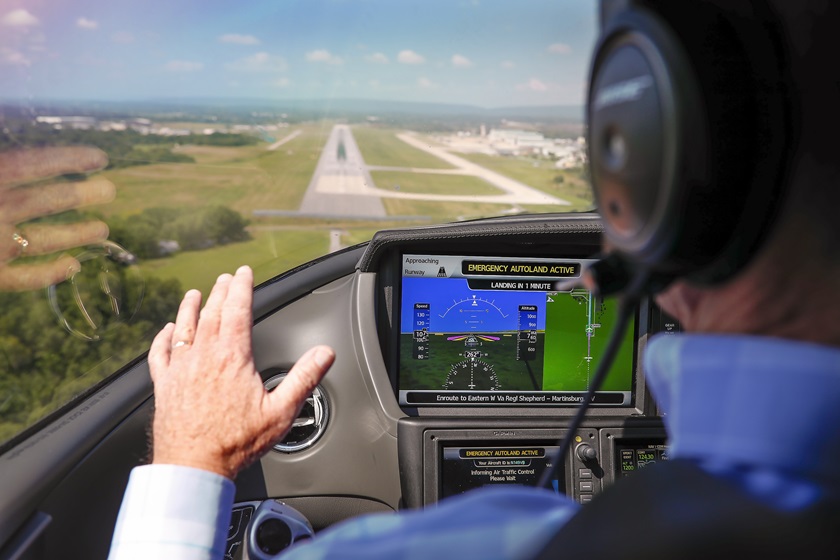Collier Trophy finalists for 2020 announced

The nominees include:
The Bell V–280 Valor
The Bell V–280 tilt-rotor aircraft has a 12,000-pound useful load and can deliver up to 12 troops from 500 to 800 nautical miles at 280 knots—more than twice the current range and speed—and with agility “greater than a traditional helicopter’s capabilities,” according to the manufacturer.
Boeing Confident Travel Initiative
Through the Boeing Confident Travel Initiative, health and safety remain high on the priority list during the resumption of air travel and the relaxing of coronavirus pandemic restrictions. Boeing and its industry partners including airlines, regulators, and other organizations are working through the initiative “to enhance health safeguards and develop new solutions.”
Garmin Autoland
The revolutionary Garmin Autoland system was certified for the Piper M600/SLS in 2020, making the aircraft the first “ever certified with a system that will land the airplane on its own should the pilot become incapacitated,” as AOPA reported. According to Garmin, the system can “automatically manage aircraft speed, engine performance and engine power so the aircraft can climb, descend or maintain altitude as needed during an Autoland activation. On approach to land, the system initiates a controlled descent to the airport.”
Reliable Robotics Remotely Operated Aircraft System
Reliable Robotics is working to bring autonomous technology to airplanes, and in 2020 the company announced achieving “historic firsts for global commercial aviation by completing successful test flights of remote-piloted passenger airplanes in United States airspace.” The first flight featured a Cessna 172 that operated autonomously from taxi to landing. Later, Reliable Robotics “demonstrated fully automated remote landing” of a larger aircraft, the Cessna 208 Caravan.
SpaceX Falcon 9 and Dragon 2
Space-exploration technologies venture SpaceX’s reusable Falcon 9 rocket is “the world’s first orbital class reusable rocket,” designed and manufactured to safely and reliably transport “people and payloads into Earth orbit and beyond.” In 2020, SpaceX delivered NASA astronauts to and from the International Space Station “on American vehicles for the first time since 2011.” The next-generation Dragon 2 spacecraft is the successor to the reusable Dragon 1, and is capable of autonomously docking with the International Space Station.
US Department of the Air Force Green Propellant Infusion Mission Team
In 2020 NASA “validated a new type of propellant, or fuel, for spacecraft of all sizes,” as a substitute for toxic hydrazine, which requires handlers to wear protective suits and calls for special loading procedures. The validation occurred in just over a year of testing following launch on a SpaceX Falcon Heavy rocket for NASA's Green Propellant Infusion Mission. Tests of both the propellant and the propulsion system indicated that “both are practical options for future missions.”
Yates Electrospace Corporation’s Silent Arrow
The Silent Arrow one-ton-gross-weight disposable cargo drone demonstrated autonomous flight after being deployed from “U.S. Air Force C-130s and rotorcraft sling load operations,” according to the developer. The aircraft was designed to deliver critical equipment anywhere in the world for tactical aerospace and defense or civilian disaster-relief operations. The aircraft’s gross weight and three-quarter-ton payload capability are “500 times greater than typical quadcopter delivery drones and it can deliver lifesaving military, humanitarian supplies or vaccines autonomously and safely from up to 25,000 feet and a 40-mile standoff distance,” the developer said.
The Collier Trophy Selection Committee plans to meet virtually in June, followed by an announcement of the 2020 winner of the Collier Trophy. A formal presentation “will take place when health and safety protocols allow,” the National Aeronautic Association said.
The 2019 Collier Trophy winner was the U.S. Air Force-Boeing X–37B Orbital Test Vehicle Team for designing the robotic, unmanned X–37B, intended to operate in low-earth orbit. The trophy has previously been bestowed by the nonprofit organization on Orville Wright, Howard Hughes, two Apollo program space crews; the Boeing 747, the Cessna Citation, the International Space Station, Cirrus Aircraft, Gulfstream Aerospace, and Eclipse Aviation.


